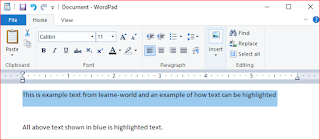Computer memory (RAM) buying tips.
Computer memory is one of the most commonly purchased and performed computer upgrades. Below is a listing of different considerations and tips to look for when purchasing computer memory.
What type of memory does my computer need?
How much memory should I get?
This question depends on the computer user you are, what programs you plan on running on the computer, and how many programs you have open at a given time. One of the best methods of determining how much RAM you should have is to look at the system requirements of the programs you're running on your computer and double whatever the memory requirements are for the program you use most. However, below is the general recommendation for memory we'd suggest your computer has for today's programs and operating systems.
Minimum: 2GB
Recommended: 8GB
Excellent: 8GB or more.
What should be expected
Upgrading the computer system memory may have the below effects on the computer.
Allow for programs that may require steeper memory requirements to be ran.
Help the computer or computer programs speed in load and opening time.
Fix memory errors.
Memory installation
Additional help and information about installing computer memory and other computer hardware can be found through our Installation section.
Computer memory is one of the most commonly purchased and performed computer upgrades. Below is a listing of different considerations and tips to look for when purchasing computer memory.
What type of memory does my computer need?
How much memory should I get?
This question depends on the computer user you are, what programs you plan on running on the computer, and how many programs you have open at a given time. One of the best methods of determining how much RAM you should have is to look at the system requirements of the programs you're running on your computer and double whatever the memory requirements are for the program you use most. However, below is the general recommendation for memory we'd suggest your computer has for today's programs and operating systems.
Minimum: 2GB
Recommended: 8GB
Excellent: 8GB or more.
What should be expected
Upgrading the computer system memory may have the below effects on the computer.
Allow for programs that may require steeper memory requirements to be ran.
Help the computer or computer programs speed in load and opening time.
Fix memory errors.
Memory installation
Additional help and information about installing computer memory and other computer hardware can be found through our Installation section.
































